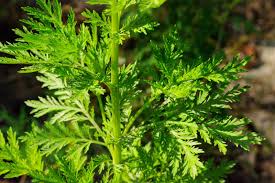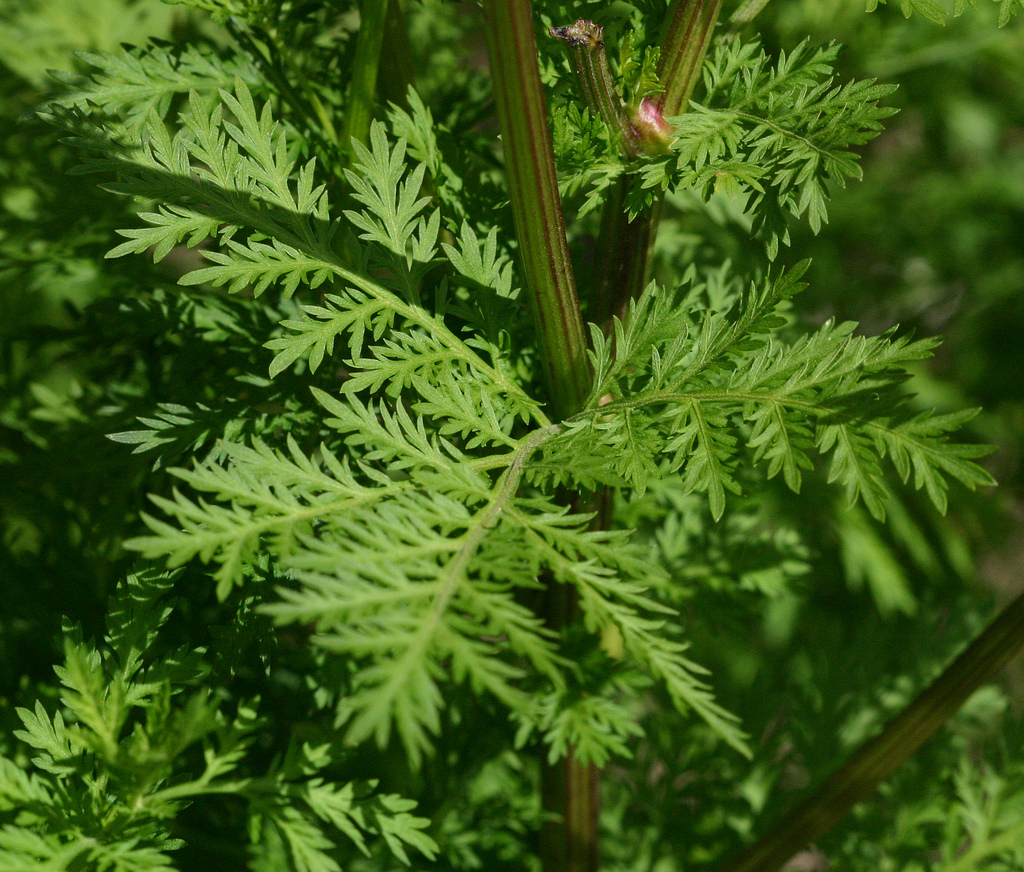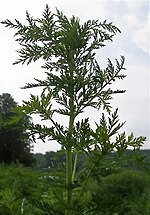

青蒿素(Qīnghāosù,英語:Artemisinin,也稱黃花蒿素)及其衍生物是現今所有藥物中起效最快的抗惡性瘧原蟲瘧疾藥。] 使用包含青蒿素衍生物在內的青蒿素聯合療法是現今全球範圍內治療惡性瘧原蟲瘧疾的標準方法。青蒿素提取自中醫使用的中藥黃花蒿。
化學上,青蒿素是少見的一種含有過氧橋的倍半萜內酯類化合物。普遍認為這種過氧化結構與青蒿素的抗瘧活性有關。已知其他多種天然來源的含有過氧橋的化合物。
世界衛生組織明確指出不要單獨使用青蒿素進行治療,,因為有研究指出這會增加瘧原蟲的耐藥性。已證明使用包括青蒿素在內的多要聯合療法治療瘧疾同時具有很好的效果和耐受性。使用青蒿素來治療間日瘧原蟲瘧疾也越來越普遍,並且使用其來治療癌症也是近來研究的課題之一
1969年-1972年間,屠呦呦領導的523課題組發現並從黃花蒿中提取了青蒿素。
屠呦呦也因此獲得2011年拉斯克獎臨床醫學獎 和2015年諾貝爾醫學獎[。
Artemisinin /ɑrtɨˈmɪsɨnɨn/, also known as qinghaosu and its semi-synthetic derivatives are a group of drugs that possess the most rapid action of all current drugs against Plasmodium falciparum malaria.[1] Treatments containing an artemisinin derivative (artemisinin-combination therapies, ACTs) are now standard treatment worldwide for P. falciparum malaria. Artemisinin is isolated from the plant Artemisia annua, sweet wormwood, an herb employed in Chinese traditional medicine. Its precursor can now also be produced using genetically engineered yeast.
Chemically, artemisinin is a sesquiterpene lactone containing an unusual peroxide bridge. This peroxide is believed to be responsible for the drug's mechanism of action. Few other natural compounds with such a peroxide bridge are known.]
Artemisinin and its endoperoxides derivatives have been used for the treatment of P. falciparum related infections but low bioavaibility, poor pharmacokinetic properties and high cost of the drugs are a major drawback of their use.[3] Use of the drug by itself as a monotherapy is explicitly discouraged by the World Health Organization,[4] as there have been signs that malarial parasites are developing resistance to the drug. Therapies that combine artemisinin or its derivatives with some other antimalarial drug are the preferred treatment for malaria and are both effective and well tolerated in patients. The drug is also increasingly being used in Plasmodium vivax malaria,[] as well as being a topic of research in cancer treatment.







